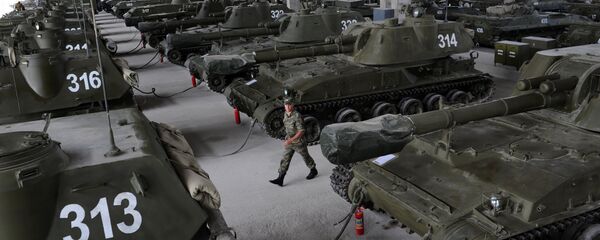On Wednesday, Russian Defense Minister Sergei Shoigu and his Armenian counterpart Seyran Ohanyan signed an agreement on the creation of a joint regional air defense system for the Caucasus region.
The agreement was one of several CIS Defense Ministers' Council cooperation plans for 2016 inked in Moscow, with negotiations ongoing for regional air defense agreements with Kyrgyzstan and Tajikistan. A joint air defense agreement was reached between Russia and Kazakhstan in 2013, Moscow recently handing a S-300 SAM platform over to Astana. Russian and Belarusian air defense systems have already been unified.
Earlier this month, the Erebuni base was reinforced with six Mi-24P assault helicopters, along with several Mi-8MT transport helicopters. Two weeks earlier, seven Mi-24s and several Mi-8MTs were deployed to the base.
Commenting on the Russian-Armenian agreement, Turkish English-language media worriedly hint that it could be connected to Turkey's downing of a Russian Su-24M bomber over Syria last month, as well as the presence of US bases in the country.
Commenting on Luzan's analysis, Today's Zaman suggested that "the increasing Russian military presence in Armenia, a landlocked country in the South Caucasus bordering Turkey, will likely stir uneasiness in Ankara."
For its part Hurriyet Daily News went further, warning that that the Turkish government believes that deal threatens to "heat up the Caucasus."
Speaking to the paper, an anonymous official said that "Russia and Armenia [need] to abstain from actions that would jeopardize regional peace in the Caucasus," with Ankara fearing that "Yerevan's attitude would boost the risk of clashes in the region," presumably referring to intensifying clashes between Armenia and Azerbaijan over the contested Nagorno-Karabakh region.
For its part, the official suggested, Ankara is in favor of continuing with its 'good neighbor relationship' in the Caucasus.
Turkey's 'zero problems with neighbors' policy has been seriously strained in recent months by President Recep Tayyip Erdogan's apparent ambitions for regional hegemony, from his support for anti-government militants in Syria, to the shootdown of the Russian Su-24 last month, to Turkey's illegal intervention in northern Iraq earlier this month.






